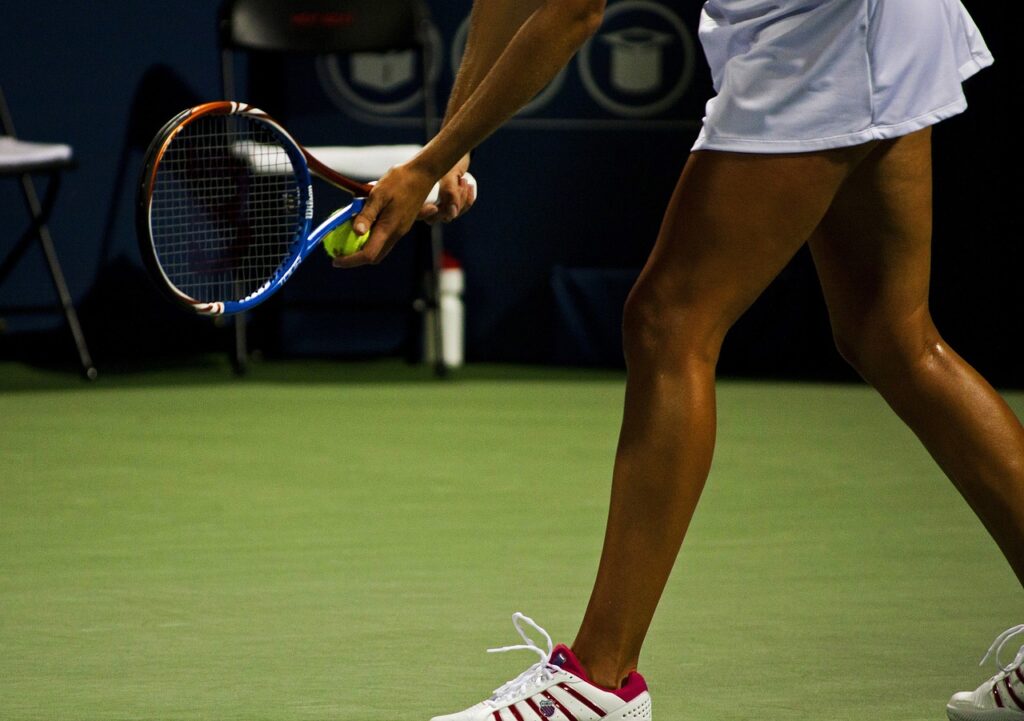- You are here:
- Home »
- Uncategorized »
- Ace Your Game: Tips for Choosing the Perfect Tennis Racket
Ace Your Game: Tips for Choosing the Perfect Tennis Racket

Ace Your Game: Tips for Choosing the Perfect Tennis Racket
Tennis is a sport that requires precision, agility, and power. It is a test of skill, technique, and endurance. However, one of the most important aspects of tennis is having the right equipment, and choosing the right tennis racket is crucial to your success on the court.
There are many factors to consider when choosing a tennis racket, including the size of the racket head, the weight and balance of the racket, the string pattern and tension, the grip size, and the material of the racket. In this article, we will guide you through the key factors to consider when selecting a tennis racket.
1. Size of the Racket Head
The size of the racket head is one of the most important factors to consider when choosing a tennis racket. The head size of a tennis racket is measured in square inches. The most common sizes are between 90 and 110 square inches. A larger head size will provide a larger sweet spot, which is the area on the racket head that provides the most power and control of the ball. A smaller head size provides less power but more control.
2. Weight and Balance
The weight and balance of a tennis racket will affect how easily you can maneuver the racket and generate power. The weight of the racket is usually measured in ounces and can range between 8 and 14 ounces. A heavier racket will provide more stability and power, while a lighter racket will be easier to maneuver and generate more spin.
The balance of a tennis racket is the distribution of weight between the head and handle of the racket. A head-heavy racket provides more power, while a handle-heavy racket provides more control. A balanced racket is suitable for players who want a combination of power and control.
3. String Pattern and Tension
The string pattern and tension of a tennis racket will affect your ability to control the ball and generate power. The string pattern of a racket is the way the strings are arranged on the racket head. The two most common string patterns are the open string pattern and the closed string pattern. An open string pattern provides more power and spin, while a closed string pattern provides more control and accuracy.
The tension of a tennis racket refers to how tight the strings are strung. A higher string tension will provide more control and accuracy, while a lower tension will provide more power and comfort.
4. Grip Size
The grip size of a tennis racket is the circumference of the handle. The most common grip sizes are between 4 and 4 5/8 inches. Choosing the right grip size is crucial for comfort and control. A grip that is too small can cause the racket to slip out of your hand, while a grip that is too large can be uncomfortable and make it difficult to handle the racket.
5. Material of the Racket
The material of a tennis racket can affect its durability, power, and feel. Tennis rackets are usually made of graphite, aluminum, or a combination of both. Graphite rackets are lightweight and provide more power, while aluminum rackets are more durable and provide more control.
FAQs
Q1. What is the best racket head size for a beginner?
A1. A racket head size between 100-110 square inches is the ideal size for beginners. This will provide a larger sweet spot and more power.
Q2. How do I know what grip size I need?
A2. The best way to determine your grip size is to measure your hand’s circumference. Hold a ruler perpendicular to the ground and measure from the tip of your ring finger to the middle crease in your palm. A grip size of 4 inches is suitable for most women, while a grip size of 4 3/8 inches is suitable for most men.
Q3. Should I get a power racket or a control racket?
A3. It depends on your playing style and skill level. If you have a powerful swing and need help controlling your shots, a control racket with a closed string pattern and higher tension is ideal. If you need more power and require help generating power, a power racket with an open string pattern and lower tension is ideal.
In conclusion, choosing the perfect tennis racket requires careful consideration of several factors. The size of the racket head, weight and balance, string pattern and tension, grip size, and the material of the racket are all important factors to consider. By choosing the right racket for your playing style and skill level, you can improve your game and become a better tennis player.
Check our detailed reviews https://tennisgearhub.com/reviews

